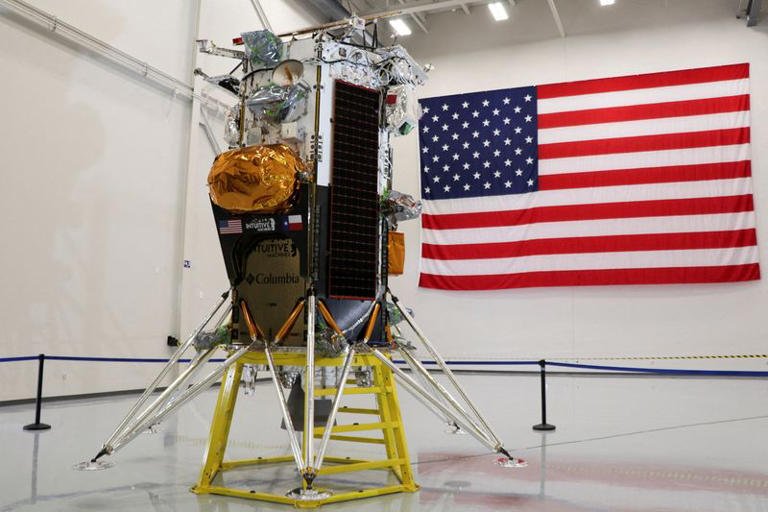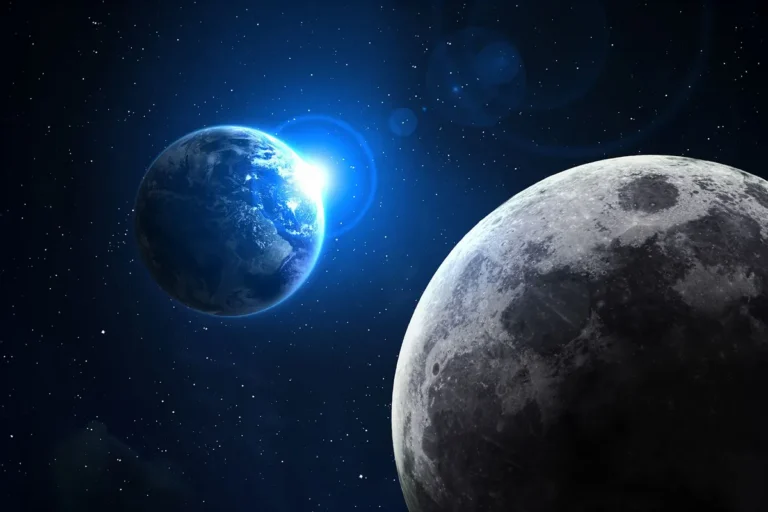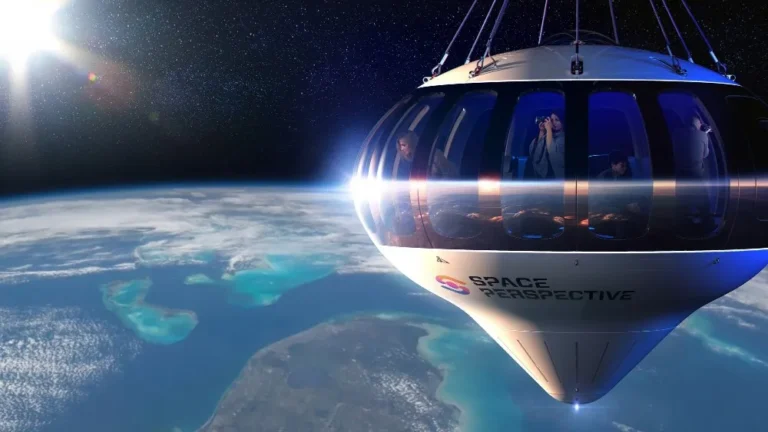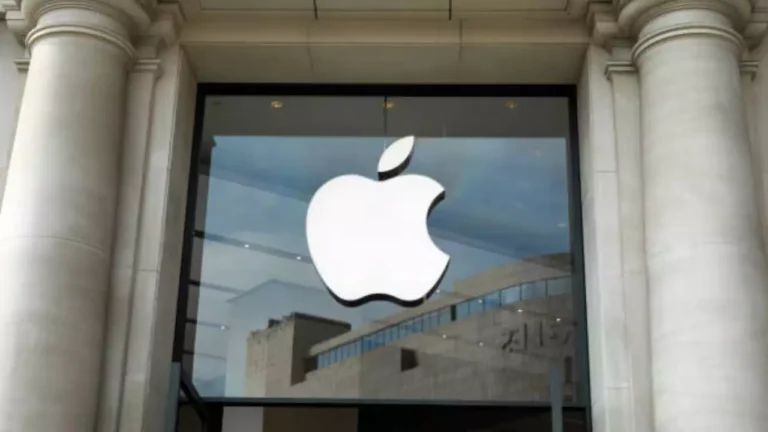
The exploration of space has always captured the imagination of humanity, driving us to push the boundaries of what we know and what we can achieve. On February 15, 2024, a significant milestone was reached in space exploration as a spacecraft built and flown by Texas-based company Intuitive Machines made history by landing near the moon’s south pole. This event marked the first U.S. touchdown on the lunar surface in over half a century and the first ever achieved by the private sector. In this article, we delve into the details of this groundbreaking achievement, its significance for future lunar exploration, and the challenges and triumphs along the way.
The Journey Begins: The journey towards this historic moment began years earlier, with Intuitive Machines setting its sights on developing a spacecraft capable of reaching the moon. Named the Nova-C lunar lander, this innovative vehicle was designed to navigate the challenges of space travel and safely deliver its payload to the lunar surface. With the backing of NASA and a team of dedicated engineers and scientists, Intuitive Machines embarked on a mission that would push the boundaries of what was thought possible in commercial space exploration.
The Nova-C lunar lander, equipped with several research instruments, was launched atop a SpaceX Falcon 9 rocket from NASA’s Kennedy Space Center in Cape Canaveral, Florida. This marked the beginning of a journey that would culminate in a historic lunar landing, with the spacecraft carrying the hopes and dreams of those involved in its creation.
Nail-Biting Descent: As the Nova-C lunar lander approached the moon’s surface, anticipation and tension mounted in mission control centers across the globe. The final moments of the descent were particularly nerve-wracking, with unexpected challenges threatening to derail the mission. Communication glitches and navigation system issues presented formidable obstacles, requiring quick thinking and decisive action from the ground control teams.
Despite these challenges, the Nova-C lunar lander, affectionately dubbed Odysseus, successfully touched down near the moon’s south pole at approximately 6:23 p.m. EST. The moment was met with a collective sigh of relief and jubilation as engineers and scientists celebrated this historic achievement. However, the celebrations were tempered by the realization that the mission was far from over, with questions lingering about the condition of the spacecraft and its ability to fulfill its objectives.
Uncertainties and Challenges: In the aftermath of the landing, initial communications problems cast a shadow of uncertainty over the mission. The faint signal received from the spacecraft raised concerns about possible obstructions or impairments that could impact its ability to function effectively. Engineers and scientists worked tirelessly to assess the situation and determine the best course of action moving forward.
One of the key challenges facing the mission was the potential obstruction of the spacecraft’s antenna, which could hamper its ability to transmit data and carry out its scientific objectives. This raised questions about the feasibility of deploying its payloads and conducting the necessary research to advance our understanding of the lunar environment.
Despite these challenges, the team remained determined to overcome any obstacles standing in their way. Through collaboration, innovation, and perseverance, they embarked on a mission to unlock the mysteries of the moon and pave the way for future exploration.
Triumph and Celebration: Despite the initial uncertainties, the mission ultimately proved to be a triumph of human ingenuity and determination. Flight controllers confirmed that Odysseus was upright and transmitting data, signaling a successful landing and the beginning of its scientific mission. This marked a significant milestone in space exploration and a testament to the capabilities of the private sector in advancing our understanding of the cosmos.
NASA Administrator Bill Nelson hailed the achievement as a triumph, emphasizing the importance of Odysseus’ successful arrival at its designated landing site. The spacecraft’s payload, including scientific instruments and technology demonstrations, holds the key to unlocking the secrets of the lunar environment and paving the way for future exploration missions.
Looking Ahead: As Odysseus embarks on its scientific mission, the focus now shifts to the next phase of lunar exploration. NASA’s Artemis program aims to return astronauts to the moon and establish a sustained human presence on its surface. This ambitious initiative represents a new chapter in space exploration, with the moon serving as a stepping stone for future missions to Mars and beyond.
The success of Intuitive Machines’ mission underscores the potential for collaboration between government agencies and private companies in advancing space exploration. By leveraging the expertise and resources of both sectors, we can unlock new opportunities and push the boundaries of what is possible in the cosmos.
Conclusion: The historic landing of the Nova-C lunar lander represents a monumental achievement in space exploration and a testament to human ingenuity and determination. As we celebrate this historic moment, we look towards the future with optimism and excitement, knowing that the journey to the stars has only just begun. With each new discovery and each new milestone, we inch closer to unlocking the secrets of the universe and fulfilling humanity’s age-old quest for knowledge and exploration.






